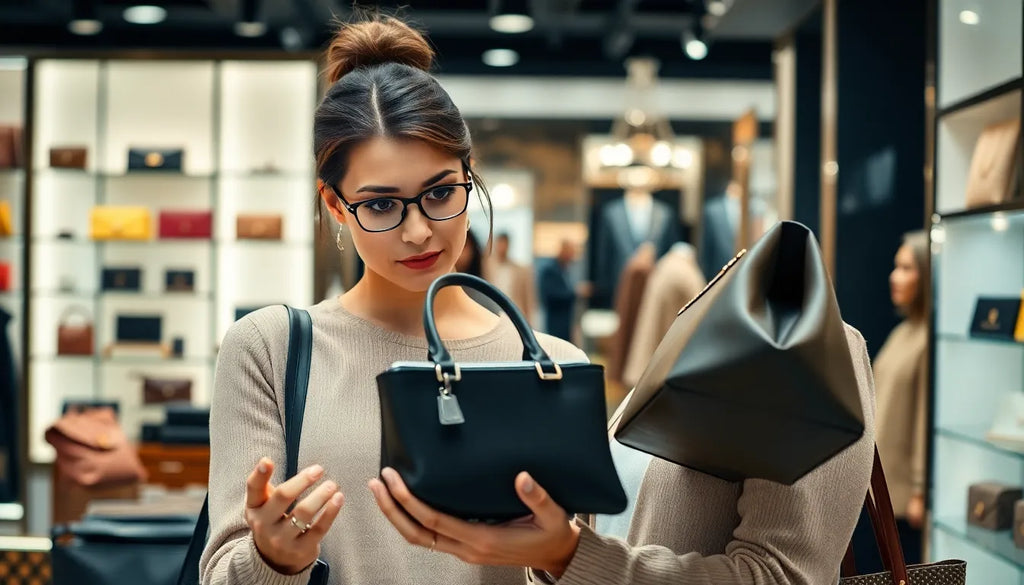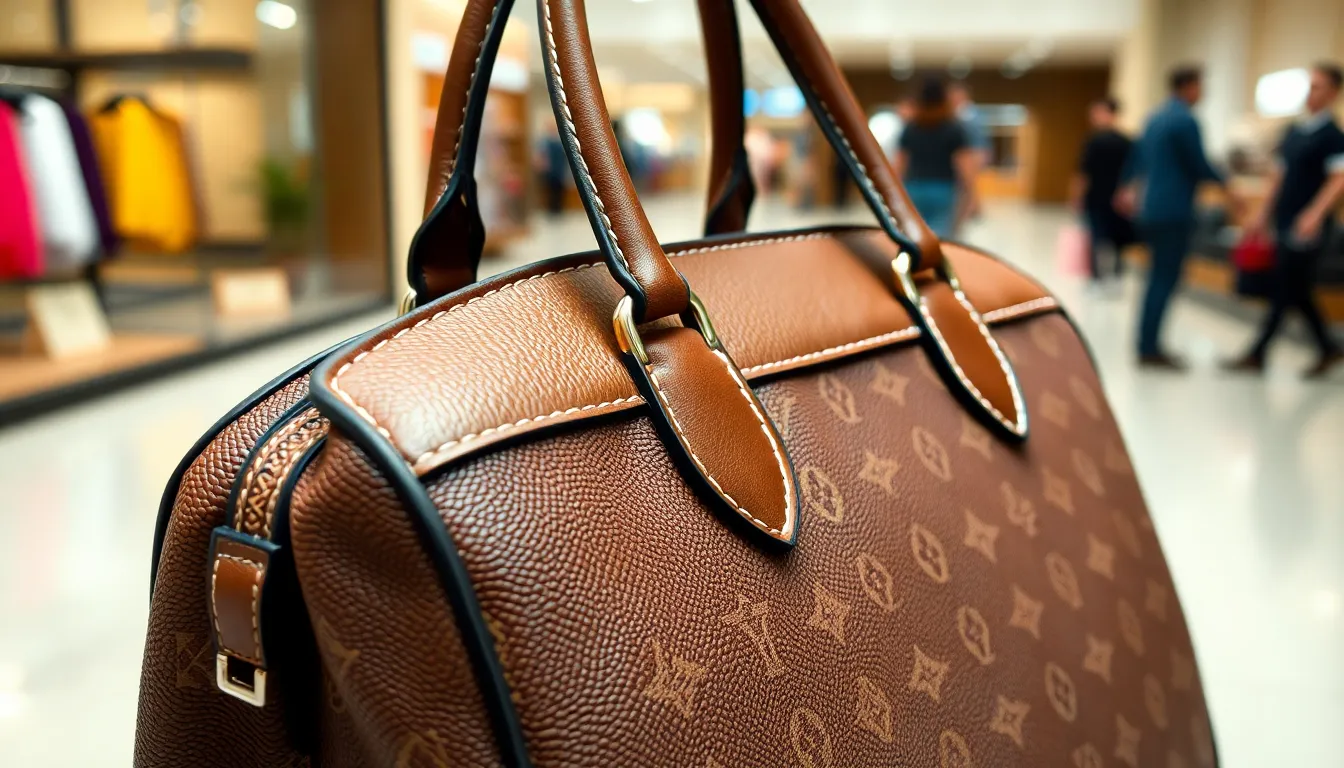Cxfakes: The Shocking Truth About Luxury Knockoffs You Need to Know

In a world where authenticity reigns supreme, cxfakes have become the ultimate tricksters, turning heads and raising eyebrows. These clever creations mimic the real deal, leaving many scratching their heads and questioning their shopping sanity. Imagine finding the perfect designer handbag online, only to discover it’s a not-so-subtle imitation that screams "bargain bin."
Cxfakes
Cxfakes reference high-quality imitations of authentic products that often fool consumers. These replicas grow increasingly convincing, making it challenging to differentiate them from genuine items. Various industries, particularly luxury goods, see a rise in cxfakes. Shoppers frequently experience difficulty identifying these fakes, especially with designer handbags and accessories.
Manufacturers of cxfakes utilize advanced techniques and materials to create products that mimic authentic items closely. Consequently, consumers face a dilemma when purchasing products online or in-store. The risk of acquiring cxfakes correlates with the popularity of a brand or product, as high-demand items attract counterfeiters.
In the fashion industry, for example, luxury brands like Chanel and Gucci often fall victim to cxfakes. Shoppers may find replicas that capture details and quality, further complicating their purchasing decisions. Sometimes, even retailers struggle to pinpoint fakes during inventory assessments, illustrating the pervasive nature of this issue.
Consumer protection agencies report a significant increase in complaints related to cxfakes. Various organizations work to educate shoppers and promote awareness about identifying authentic products. Tools such as online verification websites and product authentication services help consumers navigate the market responsibly.
Counterfeit products undermine brand integrity and impact sales for legitimate companies. In response, brands implement stricter measures to protect their trademarks and educate consumers. The consequences of cxfakes extend beyond mere customer dissatisfaction; they influence the overall market landscape and consumer trust.
Understanding Cxfakes

Cxfakes represent a significant threat in the consumer market, especially within the luxury segment. These replicas do an impressive job of mimicking authentic products, leading to widespread confusion among shoppers.
What Are Cxfakes?
Cxfakes are high-quality imitations designed to look like genuine luxury items. Often, they target well-known brands such as Chanel and Gucci, attracting buyers who desire prestige. These replicas can include fashion accessories, apparel, and handbags. Manufacturers use advanced techniques and premium materials to create cxfakes that closely resemble real products. In many cases, the details, stitching, and branding are almost indistinguishable from the originals. This level of craftsmanship fuels consumer deception and complicates the identification of authentic items.
How Cxfakes Work
Cxfakes operate by exploiting the desire for luxury while delivering subpar products that appear genuine. Counterfeiters source similar materials and apply expert craftsmanship, producing replicas that can deceive even experienced buyers. Market demand plays a crucial role in their proliferation; the more popular a brand, the greater the incentive for counterfeit production. Many cxfakes bypass traditional retail channels, often appearing online at significantly lower prices. As a result, their accessibility increases the likelihood of consumer purchase without proper verification. Hence, the challenge remains for consumers to differentiate between authentic and fake products, making it essential to utilize available resources for confirmation.
Impact of Cxfakes
Cxfakes pose serious challenges across multiple sectors, especially for brands and consumers alike. Their prevalence disrupts market integrity and consumer trust.
Implications for Content Creators
Content creators face significant hurdles due to cxfakes. They struggle to maintain credibility when their authentic content gets overshadowed by counterfeit products. Authentic brand partnerships lose value when counterfeiters misuse brand images. Many creators must invest more time educating their audiences. Effective communication becomes critical to guide followers toward genuine products. As cxfakes confuse consumers, creators also risk losing audience loyalty. Maintaining transparency around product authenticity fosters trust and engagement among followers.
Effects on Audience Perception
Audience perception shifts dramatically when cxfakes become commonplace. Increased encounters with counterfeit goods breed skepticism toward brands. Consumers often question the legitimacy of designations such as "authentic" or "official." Trust in reputable brands diminishes when high-quality replicas flood the market. Shoppers may opt for cheaper alternatives rather than invest in genuine items. This reluctance stems from uncertainty about product authenticity. Brands risk diluting their prestigious image amid widespread counterfeiting. Heightened vigilance from consumers necessitates brands to reinforce authenticity signals actively.
Mitigating Cxfakes
Addressing the challenge posed by cxfakes requires effective strategies for detection and best practices for prevention. Consumers and brands must work together to protect market integrity and trust.
Strategies for Detection
Identifying cxfakes starts with examining product details. Inspecting tags for correct spelling and logos is crucial since counterfeiters often miss fine points. Checking for consistent stitching patterns can reveal manufacturing discrepancies. Authentic items generally feature precise, high-quality construction. Utilizing online verification services enhances detection by confirming product authenticity through serial numbers. Engaging with forums or communities focused on luxury goods provides insights into distinguishing features of genuine products. Employing these effective detection techniques aids consumers in making informed purchases.
Best Practices for Prevention
Educating consumers about cxfakes strengthens market defenses. Raising awareness through workshops and seminars equips shoppers with necessary knowledge. Encouraging retailers to adopt transparent practices fosters consumer trust. Providing clear return policies helps mitigate the risk of unsatisfactory purchases. Collaborating with brands enhances authentication initiatives, creating unified efforts against counterfeits. Regularly updating information about emerging cxfakes keeps consumers vigilant. By implementing these best practices, brands and consumers can create a more secure shopping environment.
Conclusion
Cxfakes pose a serious challenge in the luxury goods market. As these high-quality imitations become more prevalent, consumers face increasing difficulty in distinguishing between authentic items and counterfeits. The impact on brand integrity and consumer trust is profound, leading to skepticism and hesitation in purchasing decisions.
To combat this issue, both consumers and brands must prioritize education and vigilance. By utilizing verification tools and engaging with communities focused on authenticity, shoppers can make informed choices. Brands, in turn, should reinforce their commitment to transparency and authenticity to maintain their reputation.
Addressing the threat of cxfakes requires a collective effort. Only through awareness and proactive measures can the market restore trust and ensure that consumers receive the quality they expect.
